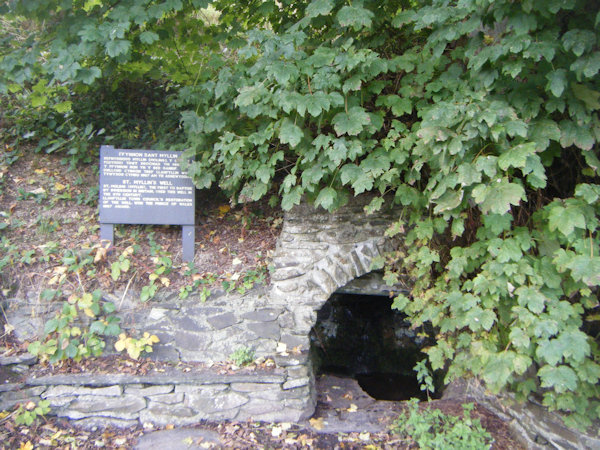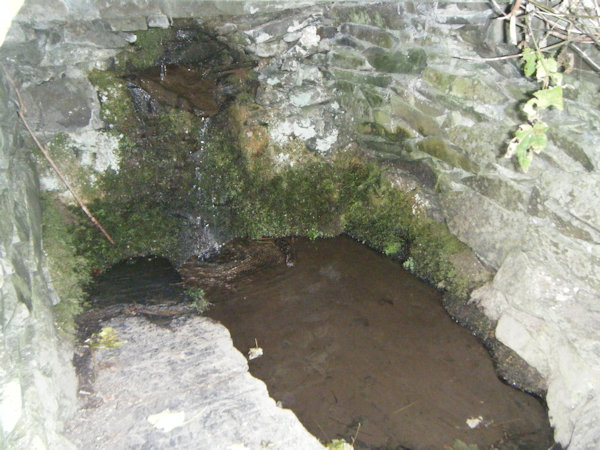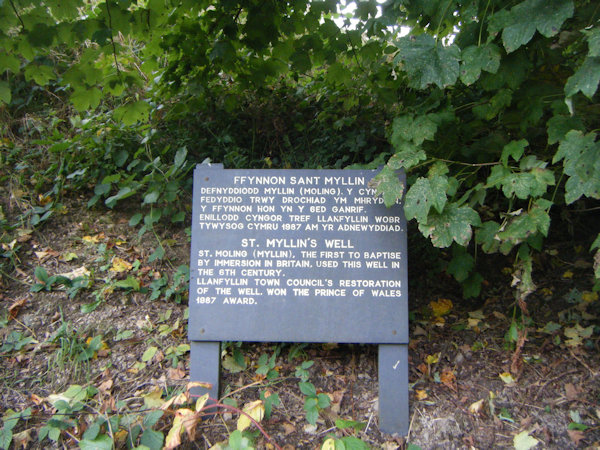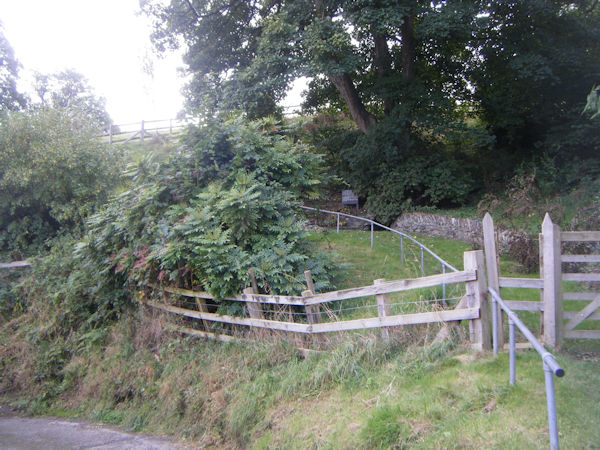 |
Dedication: Saint Myllin Location: Bodryddan Coordinates: 52.7664N, -3.2771W Grid reference: SJ139195 Heritage designation: Grade II listed building |
HOME - WALES - MONTGOMERYSHIRE
 |
Dedication: Saint Myllin Location: Bodryddan Coordinates: 52.7664N, -3.2771W Grid reference: SJ139195 Heritage designation: Grade II listed building |
Very little is known about St Myllin, Llanfyllin's patron saint, and even the century during which he was active is contested. In 1863, Harri Myllin wrote in Hynafiaethau Llanfyllin, published in Golud yr Oes, that St Myllin had resided in the parish "rhywle o 664 i 700 o.c." ("somewhere from 664 to 700 A.D."), a statement that was repeated by T. J. Hogg in his History of the Parish of Llanfyllin (published in The Montgomeryshire Collections in 1870), and the Rev. D. R. Thomas in The History of the Diocese of St Asaph (1874). However, a 6th century date was later suggested by a correspondent, calling themselves "Llywarch Hen", to Bye-Gones in 1894, and this was copied by J. Moreton Pearson, word-for-word, in a Montgomeryshire Collections article entitled Montgomeryshire Folk-Lore (1915). Although it is impossible to state for certain which date is the most accurate, the fact that Harri Myllin knew Llanfyllin very well, after having lived there for several decades, makes it more likely that his date-range is most truthful, despite the fact that most of the other saints in the area were alive during the 5th and 6th centuries.
In fact, although little is recorded of St Myllin's life, there are a number of local parish legends that relate to his time in the area, when he undoubtedly founded the parish church. Perhaps the most intriguing of these traditions is that he was, as Harri Myllin wrote in his aforementioned Hynafiaethau Llanfyllin, "y Bedyddiwr cyntaf drwy drochiad yn Mrydain" ("the first Baptist by immersion in Britain"). This idea is furthered by T. J. Hogg's assertation, in A History of the Parish of Llanfyllin (1870), that the saint's name "is derived from Mewn Llyn", meaning literally "in a lake", as a result of him "being constantly in the water baptising". Both stories appear to have been quite well-known myths, and although they are almost certainly not historically accurate (especially if Myllin was of the late 600s), as immersion was then the standard method of baptism, it clearly shows that baptism played a large part in Myllin's local mission and cult. There is also a high chance that Myllin would have baptised his converts at Ffynnon Fyllin, which establishes a potential link between the legend and the holy well.
It is worth noting the modern suggestion that St Myllin is actually the same as St Moling, an Irish bishop of the 7th century. Whilst this is possible, the fact that there are no records of St Moling ever leaving Ireland, that he is said to have been buried in Ireland (contrary to the tradition that St Myllin was buried beneath Llanfyllin's altar), and that no other possible traces of his cult exist in Wales, mean that it is highly unlikely to be true.
In truth, it is quite probable that Myllin was more of a local hermit than a travelling missionary saint, because his cult never spread past the bounds of Llanfyllin parish. Within the town, the centrepoints of the saint's cult were clearly the holy well and the church, under the altar of which St Myllin was reputedly interred (and perhaps still remains). Even the supposed location of St Myllin's "hall" or place of residence, located, according to T. J. Hogg, "near the well that goes by his name", was remembered into the late 19th century, and the Rev. D. R. Thomas wrote that the parish wake was originally held on his feast day, the 17th of June.
Little is recorded of the well itself, although it certainly would have been used as a water source for baptisms throughout the medieval period. The name by which the site is known on Ordnance Survey maps, "Ffynnon Coed y Llan", meaning "well of the church's wood", also suggests that the site has a historical connection to the nearby church, and was perhaps owned by it during the medieval period, although it no longer was when the local tithe schedule was drawn up in the 1840s. It is interesting to note that OS maps make it clear that the name "Coed y Llan" refers to the wood on the summit of hill on which Ffynnon Fyllin is located.
Unfortunately, I have been unable to uncover any local traditions of healing, or otherwise, in relation to the site, or any descriptions of what it looked like during the 19th century. Although some now lost traditions are likely to have existed during the medieval period, it is unlikely that Ffynnon Fyllin would have been a popular pilgrimage destination, and it would probably have just been used by the people of this and the neighbouring parishes. By 1910, when the Royal Commission inspected the spring, they found that it had been "closed in", but was "still used by the public". According to the Historic Environment Record (which is often inaccurate), the well "orig[inally] sported [a] stone lined basin 2m square", the "orig[inal] back wall" of which still remains. The rest of the original structure was destroyed in 1987, when it was restored by Llanfyllin Town Council, for which it won the Prince of Wales Award.
When I visited Ffynnon Fyllin in September 2024, I found that the relatively new structure, which is cave-like in appearance, was in good repair, and the area was well maintained. The spring itself was not producing a remarkable quantity of water, but a trickle was still making its way into the shallow pool in the floor of the stone chamber.
 |
 |
 |
|
Access: The well is located at the end of a public road that leads up the hill. |
Copyright 2025 britishholywells.co.uk